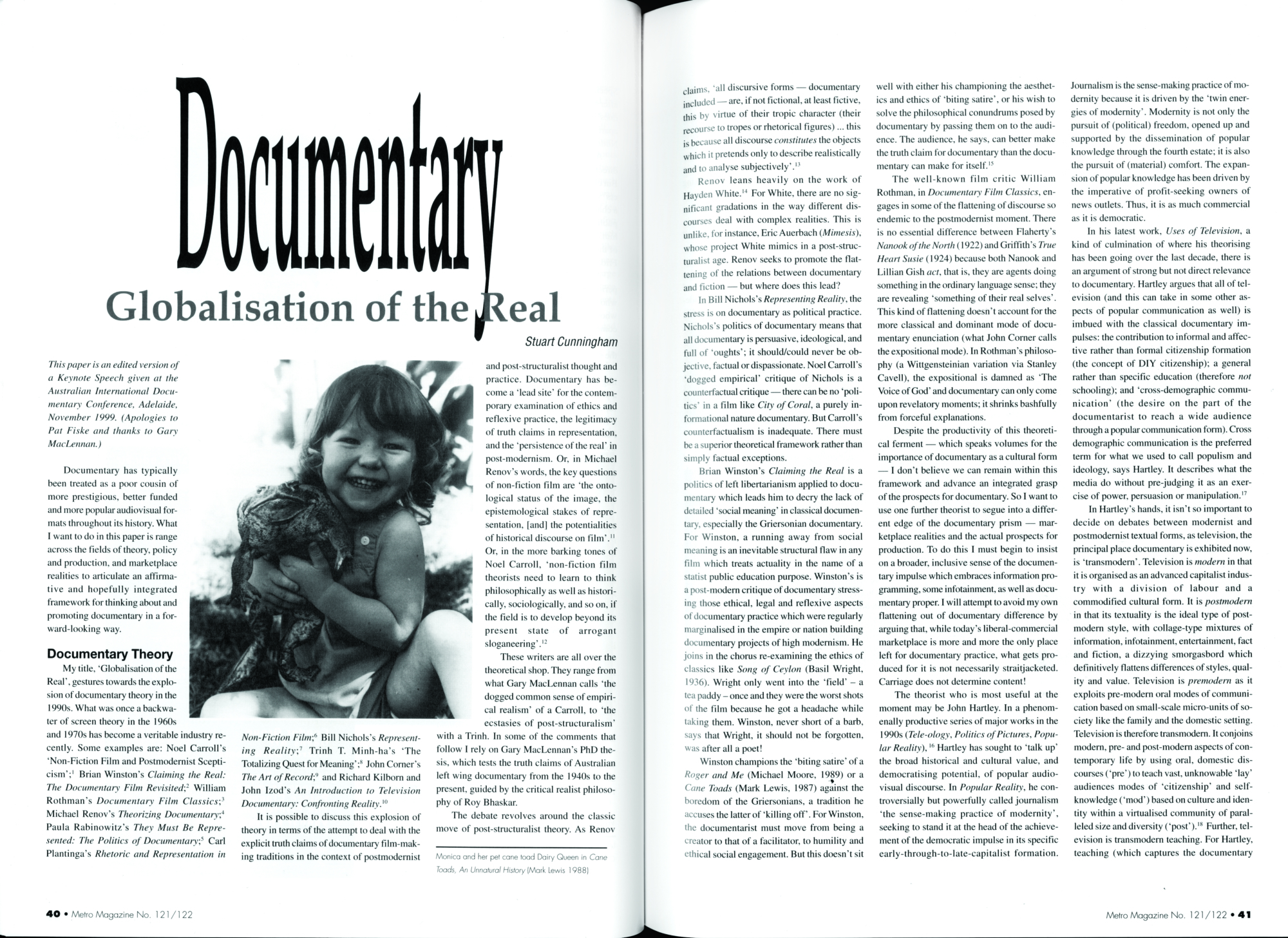‘Critic’ is not a descriptor inherently laden with goodwill in many circles. There remains a pervasive stereotype of the failed artist, the bitter miser who would rather tear down than build up. Whenever a work is shunned by critics yet popular with audiences, questions arise about what the point of critics really is: what do they know, anyway?
Of course, good film criticism reaches far beyond what is popular, and a good critic will never approach their work with the goal of finding fault. In fact, long-form criticism is often far less about assigning value, and more about exploring a filmmaker’s approach to a particular subject or genre, or the film’s context in cinematic history. It’s a search for the hidden meanings and themes only deduced by the kind of close watching usually engaged in primarily by fans and critics.
I have been privileged to be counted among the regular contributors to Metro and its sister publication, Screen Education, over the past five years, examining documentaries dealing with some of the most important issues of our time: genocide, racism, the refugee crisis, sexual violence and child abuse, among many others. These films have often come to exist only through the great risks and sacrifices of those involved – filmmakers who may be putting their lives and livelihoods on the line to tell a story they deem urgent, subjects who expose their most intimate and traumatic memories and experiences to a global audience.
For documentary critics, it’s impossible not to be cognisant of this, and, as such, reviewing these films becomes a delicate balancing act between advocacy and criticism. In the current sparse funding environment for documentary, rare is the film that makes it onto the screen without truly profound subject matter at its heart. When reviewing such titles, it’s easy to be swept up into a discussion of content over craft – a trap I myself have undoubtedly fallen into at times.
But a worthwhile story does not necessarily equal a well-crafted story, and the kind of documentary criticism featured in Metro often serves a dual role. On the one hand, it amplifies important subjects and gives those who tackle them avenues to do so effectively; on the other, it holds up a mirror to documentary makers, challenging them to use the form to its fullest potential.
Which of these roles takes precedence depends on who you ask. While researching for this article, I had the opportunity to speak to another documentary critic who has written for Metro over the years. Julia Scott-Stevenson has been reading the magazine since her undergraduate days and contributed to numerous editions since 2011. As a former programmer and impact producer for the Antenna Documentary Film Festival, she also knows firsthand how the coverage provided by publications like Metro can bolster a film’s long-term success:
As a festival programmer, I think general coverage and criticism is immensely important to the run of a film, and a publication like Metro really comes into its own in the contemporary era that sees a diversity of types of film distribution […] From an impact perspective, inclusion of some of the critical analysis in a study guide, for example, can be really useful.

Most documentaries are produced with a life beyond the festival circuit in mind, and, increasingly, tailored impact campaigns run by marketing and distribution experts have been bringing these films to where they truly matter – into the hands of teachers, social workers, politicians and those who are affected by, or have power to affect, the topics depicted on screen. This protracted life cycle and aspiration to effect meaningful change make documentaries particularly well suited to Metro’s quarterly schedule, partially academic readership and comprehensive style, according to Scott-Stevenson: ‘The long-form pieces involving deeper analysis, coupled with the potentially longer life of a film and thus opportunities to share the analysis, really complement each other.’
As the magazine is published by ATOM, a substantial proportion of its readership is made up of educators and academics. A third major segment – filmmakers – was represented by another passionate reader and occasional contributor I spoke to. Peter Hegedus started making documentaries in 1999. His documentary credits include My America (2011) and Inheritance: A Fisherman’s Story (2003), which was shortlisted for an Academy Award.
Hegedus says he ‘grew up’ with Metro, which, for him, was an important source of industry knowledge: ‘Especially before the internet came to dominate our lives, I received a great deal of my screen news and information from Metro.’ The filmmaker also saw his own work critiqued in the magazine, which he took as a sign of success: ‘News about my work over the years did appear in Metro, and it was always reassuring to be recognised in such a reputable film magazine.’
To Hegedus, a documentary critic’s role does not differ much from that of a fiction-film critic, with both acting as crucial gatekeepers in the industry.
Documentary criticism holds us filmmakers accountable in some way and is therefore pivotal in the process of dissecting, analysing and understanding the work that claims to have observed, explored or uncovered a particular kind of truth.
After all, it is a desire to portray truth that unites fiction and documentary, be that truth emotional or historical in nature. Indeed, contrary to what disgruntled fans or shunned artists may suspect, most critics are not just deeply passionate advocates for the screen industries, but also driven by this same hunt for truth that inspires filmmakers and documentarians. As such, good criticism forms a vital step in the ongoing evolution of how we tell stories – real and imagined – on screen, and should reach far beyond whether the critic ‘liked’ what they saw. As Hegedus puts it: ‘I believe we must question at all times, to keep us filmmakers and our work honest.’





